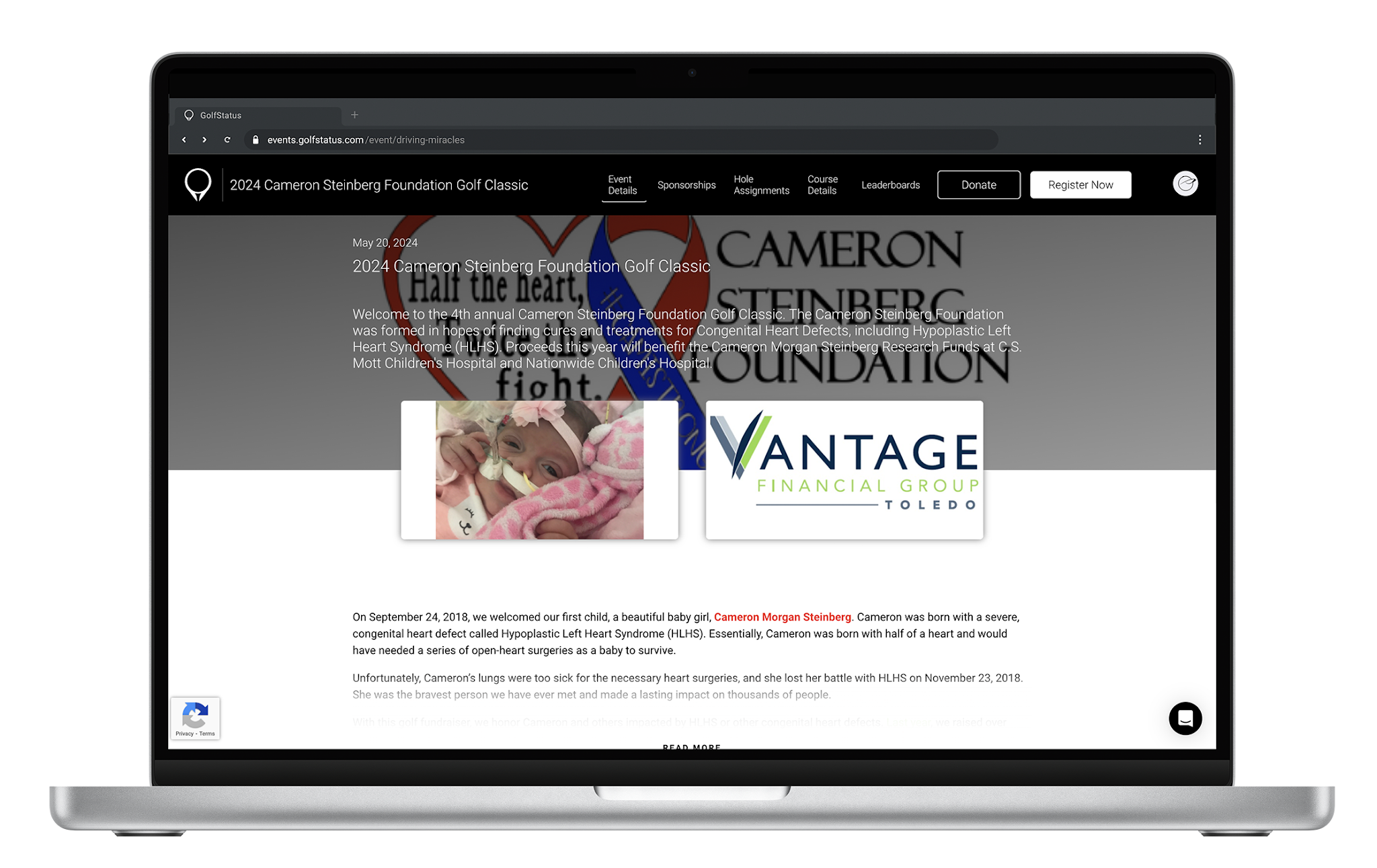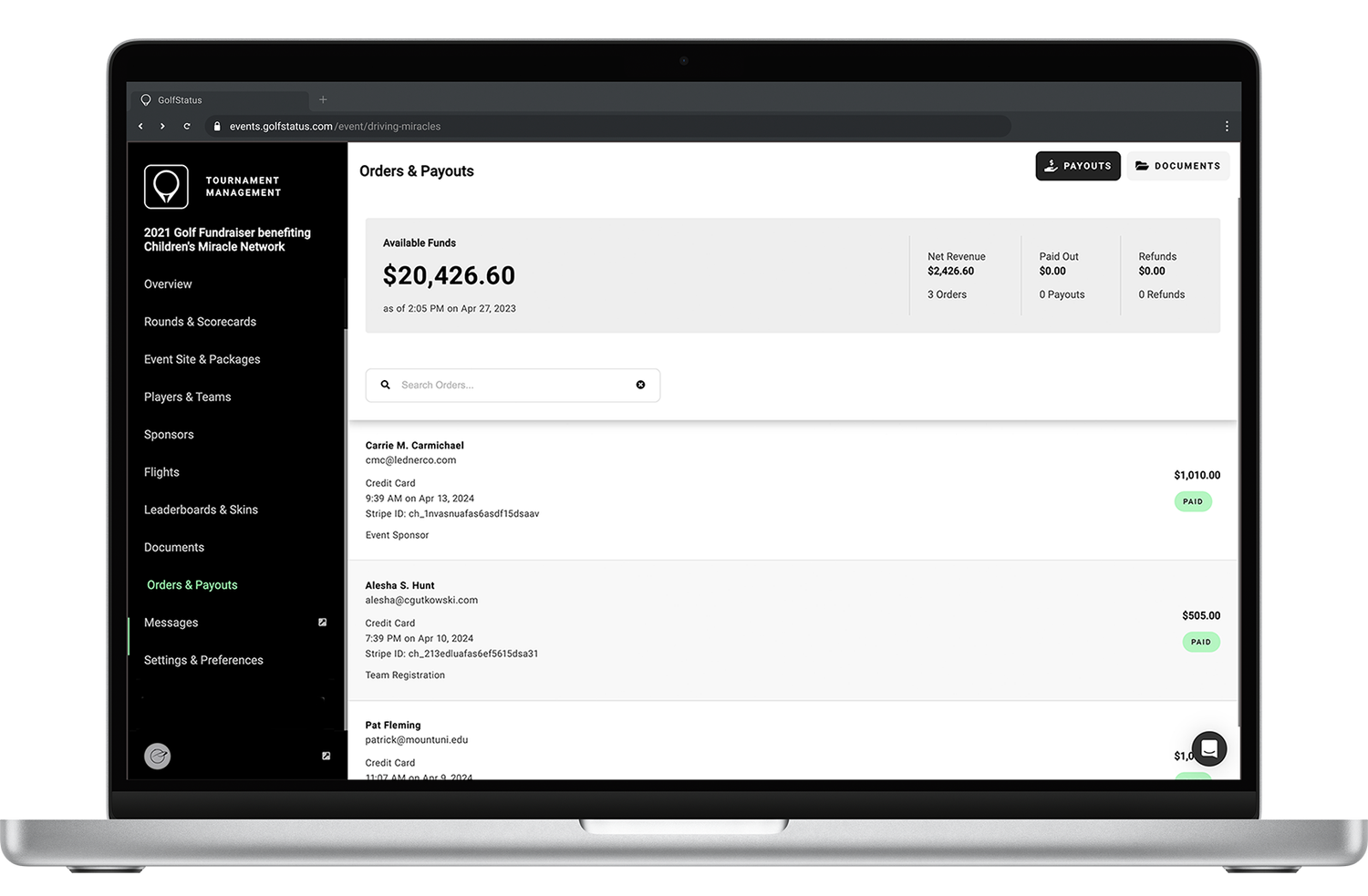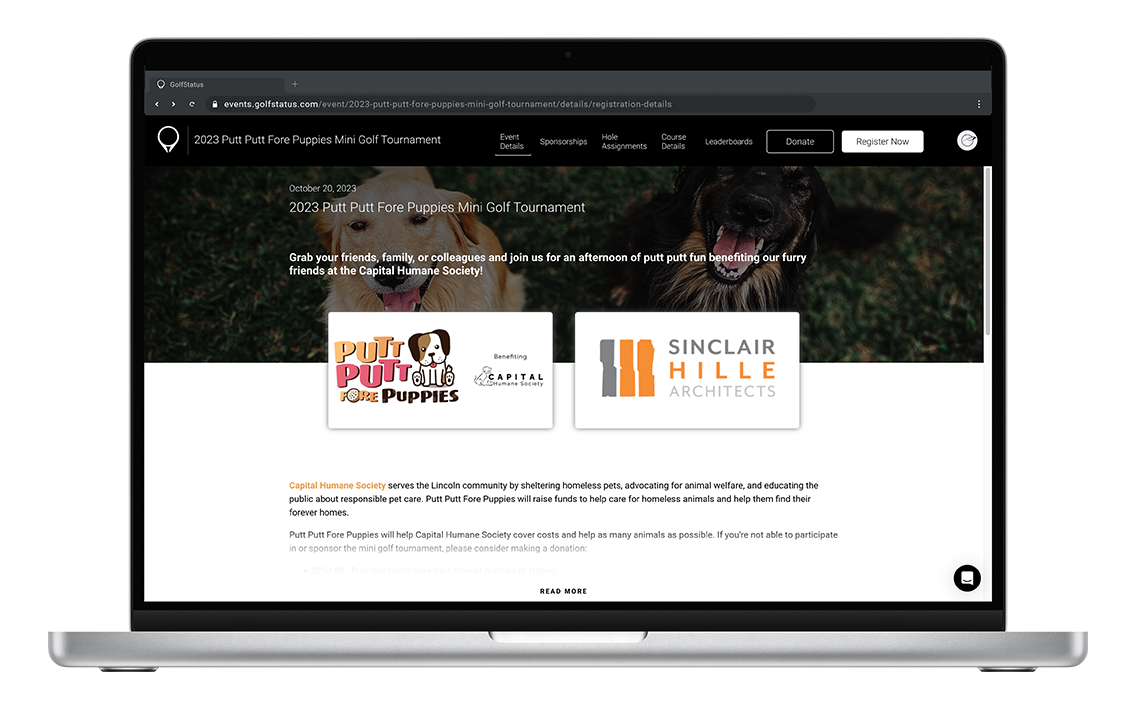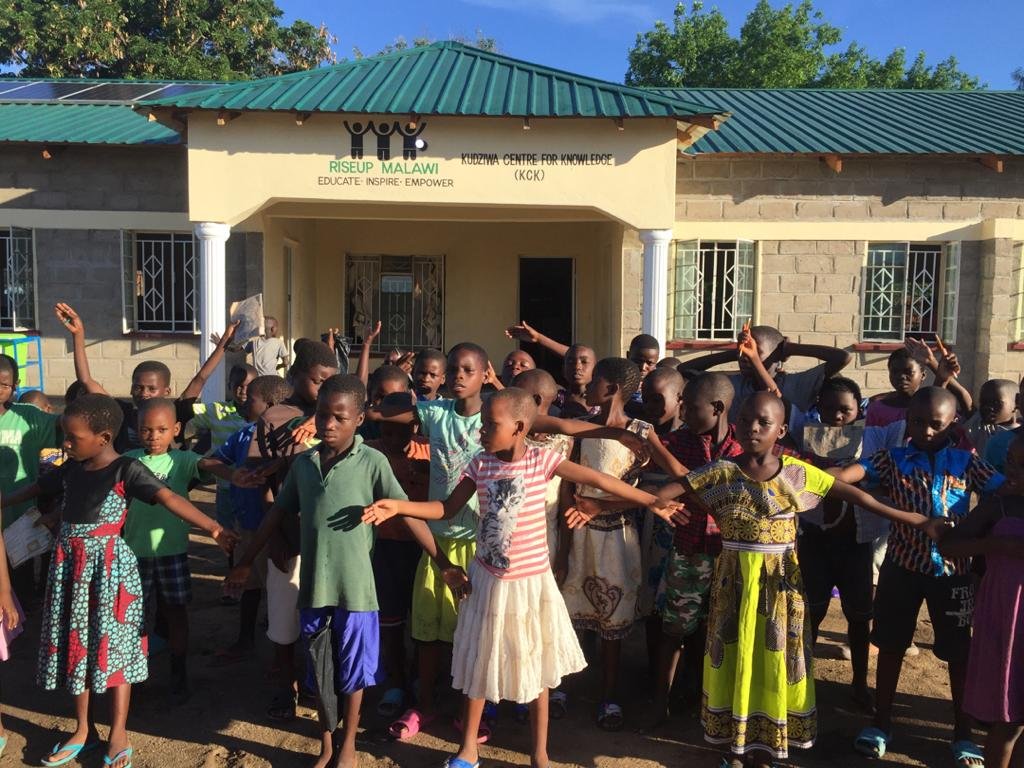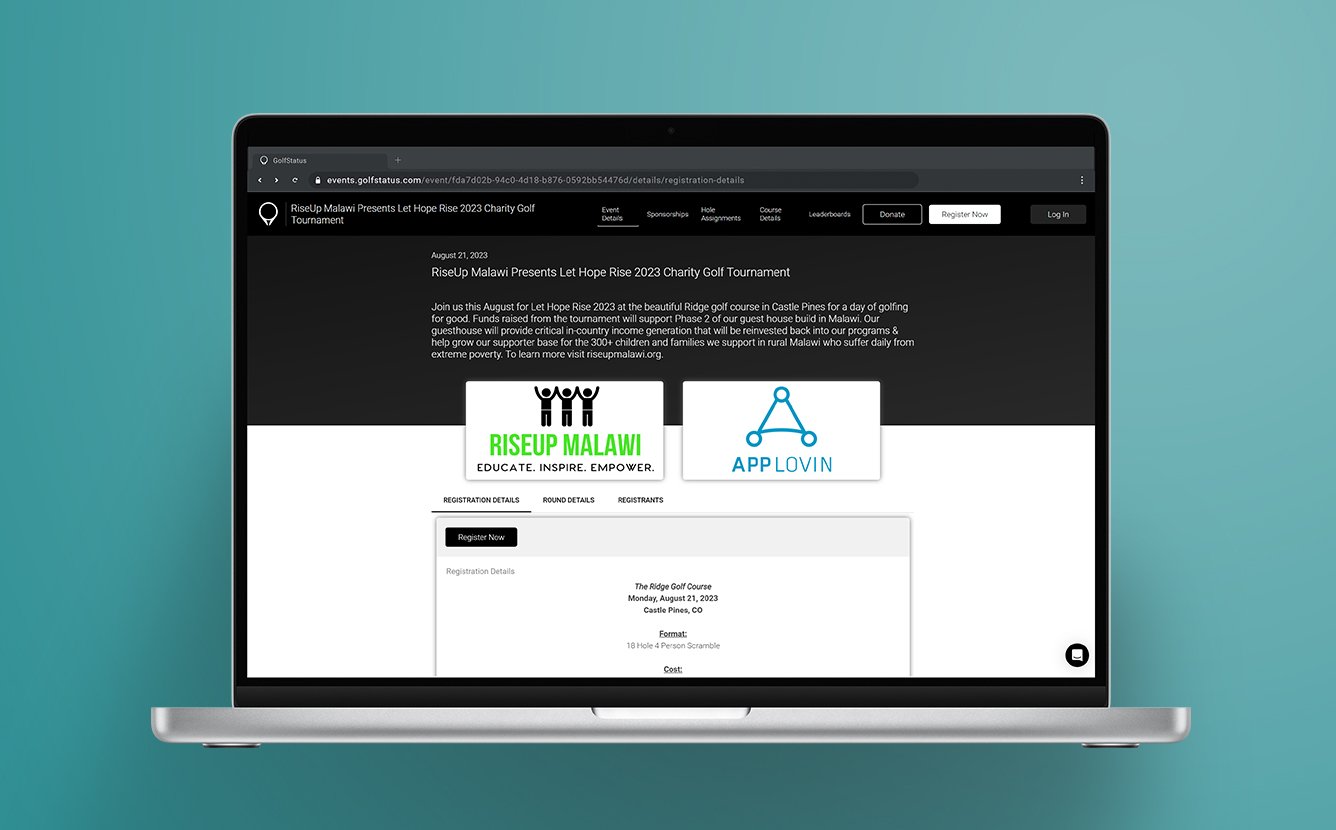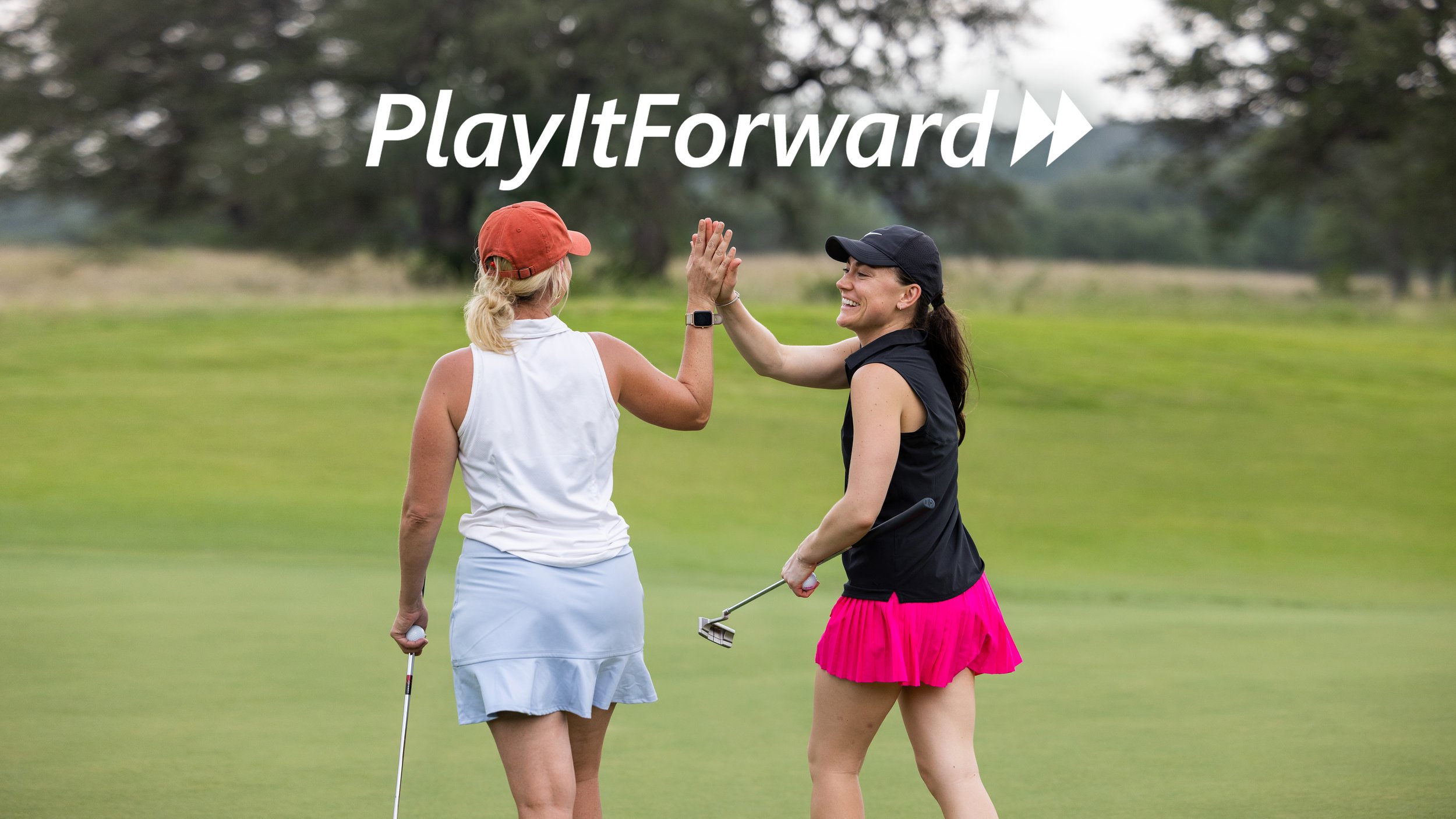There’s no nonprofit fundraising event quite like a charity golf tournament. It’s a fun, social event that not only raises money, but boosts awareness for your organization and cause, forges or strengthens partnerships, fosters corporate support, and broadens your donor pool.
Because golf tournaments have so much potential to move nonprofits forward, it’s in your best interest to attract as many golfers as possible to play in your event. Here are 11 quick ideas to get golfers interested in your tournament.
1. use an event website
If there’s one non-negotiable for a successful golf tournament, it’s an event website. You’ll meet people where they already are—online—to share information about your tournament and what you’re raising money for in a professional manner. Share the link in all your promotional materials to drive traffic to the website where they can commit as soon as they hear about the tournament.
2. make registration as easy as possible
Online registration is the standard for events these days, and golf tournaments are no different. It’s quick, convenient, and saves everyone—organizers and golfers alike—time and hassle. Everyone is busy, so an event site equipped with a simple registration checkout process is key to getting them on board. Be sure that the website is mobile-friendly so golfers can register right from their phones!
3. make it irresistible
It starts by understanding your target audience and what would appeal to them. Would they be interested in golfing at (and paying the corresponding registration fee) a high-end, private club? Or is a public course with a lower registration fee more appealing? Both can be a draw for golfers, depending on your supporters’ preferences. Attractive prizes, memorable add-ons, alternative or inclusive formats, and fun contests also go a long way toward getting golfers to say “yes” to your event, so highlight these throughout your promotions.
4. get in touch with past event participants & supporters
If yours is an existing event, start with past golfers. Invite them to come back and play in support of your mission. You might offer a special discount code or registration rate for returning players to sweeten the deal. If you’re getting a new golf event up and running, reach out to past participants in other events your nonprofit has held or participated in. Ask your loyal supporters to share the word about the upcoming golf tournament. You might provide some copy/paste verbiage or social graphics they can use on their personal channels.
5. leverage sponsors & other partners
Sponsors are a major part of your golf tournament’s success. Leverage their participation and networks to help attract players. Sponsors and businesses will often use charity golf tournaments to entertain clients, woo prospects, network, and even reward employees, so it makes sense to build a team or two into some of your sponsorship packages. Not only does this add value, but it also helps fill your tournament’s field in the process. You might also consider providing promotional assets (logos, verbiage, graphics, etc.) to your sponsors and invite them to share them on their social media platforms and with their employees.
6. get your board & planning teams involved
Ask each member of your nonprofit’s board and tournament planning committee to think of five to 10 contacts they’ll invite to play in the event. This bite-sized request makes it easy for them to follow up and broadens your pool of potential golfers. Set them up for success with talking points or email templates to help with their outreach.
7. send promotional emails
Email marketing is a cost-effective way to cast a wide net of potential golfers. Start with a save-the-date email to last year’s golfers and sponsors and/or your nonprofit’s email list as soon as you finalize the date and course. Send strategic reminder emails at intervals leading up to the tournament date. Consider adding an early bird registration period or a registration closing date to help create urgency among potential participants and get them to commit earlier.
8. use social media effectively
Social media is another cost-effective promotional vehicle for your event. Utilize your nonprofit’s presence to drive registrations via your event website. Create a Facebook event and make your planning team co-hosts so they can invite their networks to register and widen your reach. Tap into Facebook groups—there are often groups strictly for sharing nonprofit fundraising events, golf tournaments, or community events. If you have a few dollars to spare, consider a limited paid ad campaign that targets a specific geographic area or interests. If you spend even $100, but get one or two teams to register as a result, you’ve gotten good ROI!
using social media to amplify your golf fundraiser
Download this free guide to find out how to leverage social media to make the most out of your charity golf tournament and raise the most money possible for your cause!
9. Promote it to your community
Your community likely has event boards, community calendars, or other similar avenues to promote local events. Submit your tournament to such channels, and consider reaching out to local television and radio stations with a press release or an ask to list on their website. Use community gathering spots such as grocery stores, coffee shops, libraries, community centers, gyms, churches, or other locations to post flyers (with a QR code that links to your event site) advertising your tournament. The host golf facility may be willing to post flyers in the clubhouse as well, so don’t be afraid to ask!
10. leverage your tech stack
When you use GolfStatus to host your golf tournament website and manage your event, your tournament reaches tens of thousands of avid golfers in your area who actively look for local charity tournaments to play in. Your event will be listed on events.golfstatus.com as well as on the GolfStatus mobile app, helping you reach new golfers—and potential new supporters.
11. connect golfers to your cause
Be sure to help golfers understand 1. what they’re supporting by playing golf and 2. the impact of their participation on your work. Use your event website to help tell the story, and build in elements of cause connection to your tournament to help golfers get a tangible understanding—such as one team registration feeds a shelter pet for a month—of how they’re helping move your mission forward. You might use banners, signage, displays, guest speakers, beneficiary testimonials, or elements of on-course games to drive home the goals of the tournaments.
No-Risk, No-Cost Tech for Your Next Golf Event
No matter if you’re holding your first golf tournament or your twentieth, you need a golf-specific event management tool to make your life easier. GolfStatus’ robust platform is built to handle the unique needs that come with a golf event, like team pairings, hole assignments, handicaps, and more. Built-in fundraising features and exclusive revenue-boosting add-ons and sponsorships help raise more money for your cause, while automations and our industry-leading support team help save you time and effort. Best of all, nonprofits can qualify for a free event website and no-cost access to the GolfStatus platform through the Golf for Good program. Click below to learn more and get qualified!



